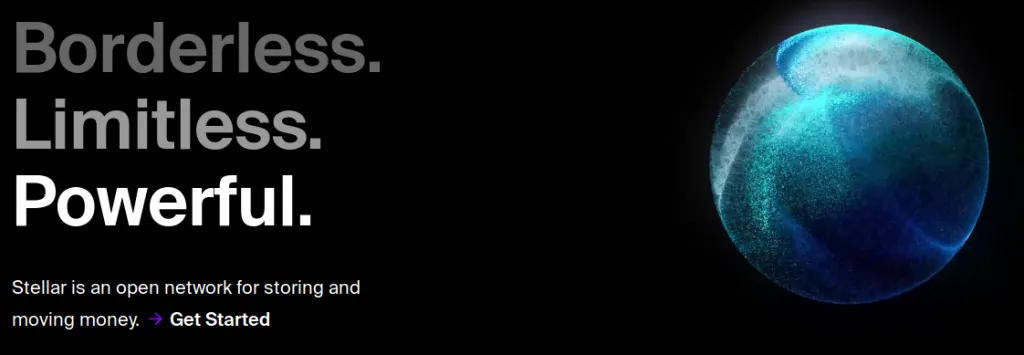2 Billion XLM air dropped by Stellar in a blog post recently. The company will distribute the 2 billion XLM tokens over a period of 20 months. The distribution will be done through Keybase Wallets.
Stellar hopes to boost XLM adoption by releasing 2 Billion tokens in the next two years in sustained air drops. They have partnered with Keybase to spread the wealth around.
To apply for the air drop, you need to have a keybase or github account before 9th September 2019.
XLM is similar to XRP and even has shared history with the XRP project. XLM is worth 0.06 US dollars.
The Air Drop
The air drop may be free but it comes with conditions. Only access to the XLM is via the the Keybase wallet. To get into the programme, you need to have a keybase account before 9th September 2019. If you do not have a Keybase account before that date, then you can still apply by connecting keybase to your github account. Remember that your github account has to be made before 9th September 2019.
The Short List
- Keybase or Github account before 9th Sept 2019
- 3 devices or 3 paper keys in keybase
- And a Smile
Note: Github connection to keybase will keep throwing errors but persist and it will eventually work. If it still doesn’t work, follow these steps –
Make google chrome your default browser (if you haven’t already)
- Make google chrome your default browser (if you haven’t already)
- Log into github and keep chrome open
- Open Keybase on your computer (after installing obviously)
- Revoke any previous attempts to connect github.
- Remove any earlier added gists
- Start the process from Keybase and follow the steps exactly.
- Let keybase make the gist file and then copy the contents. (Do not create the gist yourself).
- Cross your fingers and hope it works!
What is the XLM Token?
The lumen, often abbreviated XLM, is the protocol token of the Stellar network. One hundred billion lumens were created the instant Stellar went live, as part of the protocol’s design. These tokens play a unique role in the network’s operation.
Lumens are available at every major cryptocurrency exchange.
Anyone that wants to hold or move money on Stellar must also hold lumens. Per the protocol, every account must set aside a small increment of lumens for each type of asset it holds. Similarly, an account must reserve lumens for each open offer against its assets. The total holdback for a typical account is low—a few XLM.
Stellar also imposes a very small fee for each transaction, and that fee can only be paid in lumens. The median fee on the network right now is 0.00001 XLM—about a millionth of a US dollar.
What is Stellar?
Stellar is a multi-currency payment backend that tens of thousands of people use every day. It’s decentralized, open-source, and developer-friendly, so anyone can issue assets, settle payments, and trade.
Stellar is a blockchain, but it works more like cash—Stellar is much faster and cheaper than bitcoin, for example. And it uses far less electricity.
How it works
Fundamentally, Stellar is a system for tracking ownership. It uses an accounting ledger, shared across a network of independent computers, to store two important things for every account holder: what they own (their account balances) and what they want to do with what they own (operations on those balances, like buy or sell offers1.)
The Stellar ledger is more robust than other blockchains’. Bitcoin, for example, stores only balances. Adding operations to the ledger means that when users’ offers overlap (say, a buy and a sell) the trade can execute automatically.
The computers that run Stellar and publish the ledger are called nodes. They systematically validate the ledger’s contents so it’s always consistent across the network. For example, when you send someone a dollar on a Stellar-built app, the nodes check that the correct balances were debited and credited, and each node makes sure every other node sees and agrees to the transaction.
Ledgers
The nodes agree using a unique algorithm, called the Stellar Consensus Protocol.
There are many ways to get agreement across a distributed network—Bitcoin’s mining method was the first and is still the most famous. But, like many first drafts, it has several flaws. SCP strives to correct them. It’s configurable, fast, and highly energy efficient.
The protocol was first proposed by Prof. Mazières. You can read his paper here.
No one controls the Stellar network; by design, it stays in sync of its own accord2. The current Stellar network is hosted by hundreds of independent computers across the globe. This is different than how accounting works at a bank, say, where a single corporation unilaterally decides what happens.
Stellar has been running for four years and has handled over 450 million operations by over 3 million individual accounts.
Transactions cost roughly 1/millionth of a dollar.
Why is Stellar better than what exists?
The modern money system has evolved over hundreds of years and has picked up a lot of baggage along the way. Rent-seeking middlemen. Cumbersome currency controls. Outdated record keeping. Opaque rules. Siloed transactions.
For example, nearly every international wire is handled by something called the correspondent banking system. Very few banks can interact directly, so your money has to pass from bank to bank like a rumor until it finds a way to its final destination. In many places, the stepwise transfers still take place by hand. In all cases, it’s slow and expensive.
Stellar was designed from scratch to solve problems like this.
- Stellar is a global, rather than a national, payment system. So users can transcend their local economy and interact directly with the world market. On Stellar, a person’s limits aren’t defined by borders—anyone on earth can own, hold, and send dollars, or euros, or yen, for example.
- Stellar is a network of peers. It lets any user talk (transact) with any other user. So, for example, banks can work directly with one another, rather than “corresponding” through middlemen.
- Stellar is ownerless and belongs to everyone. No one organization controls the network, so no one can shut it off, monopolize its functionality, or hoard its data.
- Stellar handles any asset. Unlike many distributed systems, Stellar is currency agnostic. In fact, Stellar’s most important feature is that tethering a token to a traditional asset like a dollar is easy. So Stellar can support all the currencies that the world cares about, not just crypto.
- Stellar is cheap. In fact, transactions are nearly free. Low fees mean more benefit for Stellar’s users. And Stellar’s low cost opens up use cases, like micropayments, that aren’t feasible with other systems.
- Apps built on Stellar give users access to a borderless, frictionless marketplace; many of Stellar’s advantages can be understood in a single example currency transfer.



